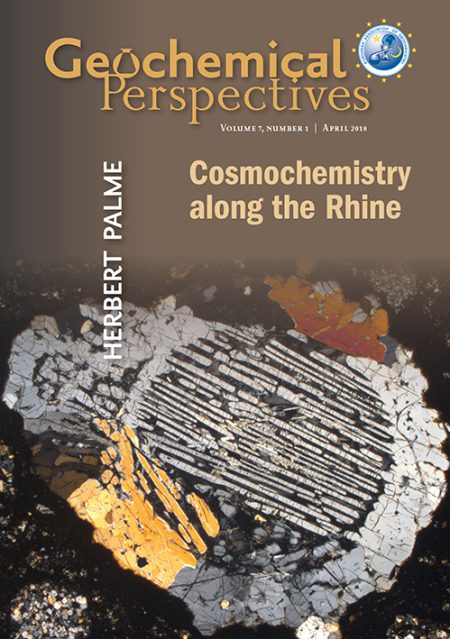
doi: 10.7185/geochempersp.7.1 | Volume 7, Number 1 (pages 1-116)
Abstract
At the beginning of this paper I give a short description of the history of the Max-Planck-Institute for Chemistry in Mainz. I then describe my activities in cosmochemistry, from spring 1971 to 1994 at the Cosmochemistry Department of the Max-Planck-Institute for Chemistry under the directorship of Heinrich Wänke, and then from 1994 on at the University of Cologne. In 2008 I retired from the university and joined the meteorite group at the Senckenberg Research Institute in Frankfurt.
I started my job at the Max-Planck-Institute for Chemistry in spring of 1971. After some time I actively participated in the chemical analyses of lunar rocks and meteorites. I helped to improve analytical schemes, devised new analytical methods and participated in the interpretation. After some time I began to pursue my own cosmochemical projects. I studied, among other things, the behaviour of trace elements in the Moon, identified the host phase of refractory metals in Ca, Al-inclusions of Allende and identified the first ultra-refractory inclusion in the Ornans meteorite.
From 1976 to 1977 I spent a year in Chicago with Ed Anders and his group analysing trace elements with radiochemical neutron activation analysis in samples from the Moon and from terrestrial impact craters. After my return from Chicago I continued the crater work for some time. I further initiated routine analyses of terrestrial and meteorite samples, leading, among other things, to an improved estimate of the composition of the mantle of the Earth. I still worked together with Heinrich Wänke on the bulk composition of planets and various problems in cosmochemistry. We made the first analyses of the Acapulco meteorite, determined the chemistry of Rumuruti the only fall of the Rumurutiites, and produced early analyses on CH-chondrites.
In 1994 I took a position as professor of geochemistry and mineralogy at the University of Cologne. From then on I spent quite some time preparing lectures, but I was also completely independent and had the possibility to attract excellent students.
In Cologne I continued to work on meteorites and samples from the upper mantle of the Earth. I was lucky to fill a six year assistant position, first with Sumit Chakraborty and then with Frank Brenker. Astrid Holzheid and Andreas Pack were post-docs with me. All four are presently professors at various universities in Germany.
Among the projects I pursued with PhD students and post-docs were bulk analyses of carbonaceous chondrites, studies of forsteritic olivines in chondritic meteorites, solubilities of Fe, Ni and Co in silicate melts, partition coefficients of Ni and Co between metal and silicate melts at various temperatures, pressures and oxygen fugacities, solubilities of noble metals in silicate melts, studies of chondrules in CR-meteorites, the complementarity of chondrules and matrix in carbonaceous chondrites etc. These projects are related to fundamental questions in cosmochemistry. How did Earth’s core form? What is the composition of the mantle of the Earth? Can we identify early formed forsterites as condensates from the solar nebula and why are they so widespread? How did chondrules form in the early solar nebula? How does the chemical compositon of chondritic meteorites fit with solar abundances? Some of these questions still keep me busy at the Senckenberg Forschungsinstitut und Naturmuseum in Frankfurt.

